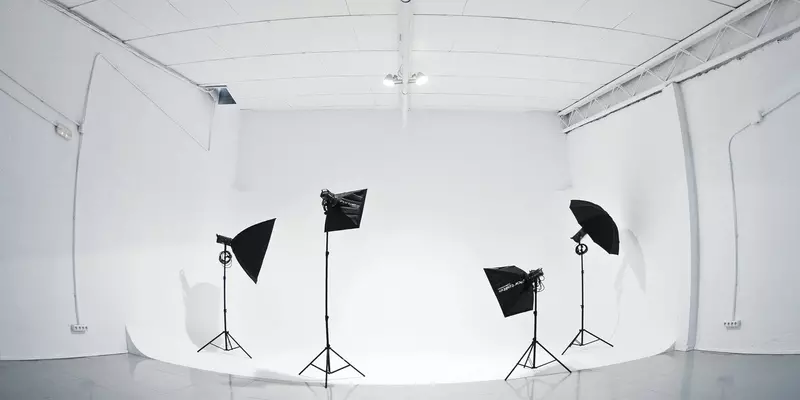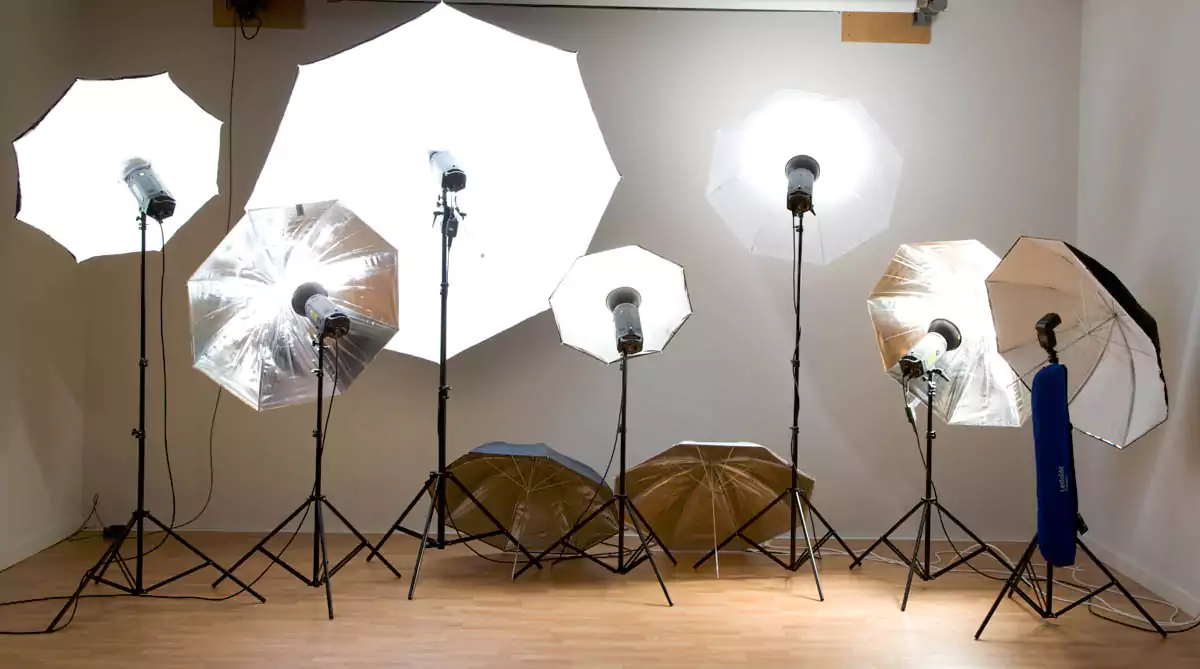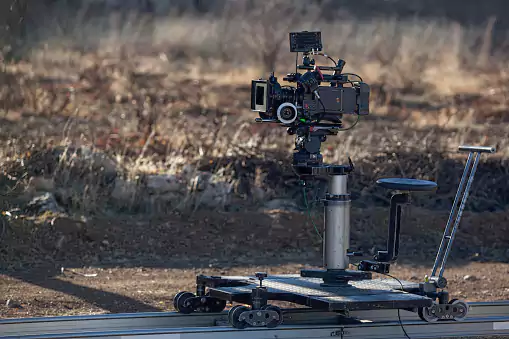Are you interested in learning about studio lighting photography? It might be challenging for a beginner to manage the setup correctly.
In photography, natural and artificial light is the primary light sources. However, artificial lighting is essential for creating a different atmosphere in photography.
When preparing for a big project, lighting, studio setup, cameraman, and producer must sink in together and deliver their best quality work.
Let’s discuss how you can learn studio photography in detail with the help of a complete setup of equipment. Read this article to learn the “photography lighting basics.”
Studio Lighting Photography Complete Guideline
01. In The Art of Photography, What Kind of Light Is Utilized?
Natural and artificial light are the primary light sources in photography. The realistic option is always my go-to, but that doesn’t mean you have to choose it too!
At present, soft LED lights are the best source for artistic photography. Therefore, it is a talent worth investing in to get you started. You need to be patient and try to portray the scenario carefully.
Do you have the best camera to capture a fantastic photo? If not, do not get frustrated. Try hard and focus on how you can make the best of this setup.

If you have an older model camera that struggles to perform effectively in low light, you should plan your picture sessions for the hours when there is plenty of natural light.
If you don’t have the appropriate settings for your camera, even images shot in the middle of the day might look terrible. What some less experienced photographers may refer to as “bad light” is an exposure issue.
Spend time studying how the ISO, shutter speed and aperture settings interact to get the desired level of exposure in your photographs.
02. What Kind of Lighting Is Ideal for Capturing Photographs?
The gentle light that appears during the golden hour is, without a doubt, the prettiest natural light there is! As photographers, we will try to capture the scenic beauty of that time.
The time just before sunrise or just after sunset is known as the “golden hour.” The light will frequently have a subtle orange, pink, or golden yellow tint, flattering to your photographs’ subjects.
The light during the golden hour is also diffused, which helps light your client’s face far better than the direct light that is present during the rest of the day.
If you cannot meet with clients during the golden hour, the next best option would be to select a venue with shade. Because the sun is at a lower angle in the sky during golden hour, you have more options for where to take photos outside.
You may take your shots on a wide-open field or by the side of a lake. There is no one correct answer when choosing the best artificial light for capturing photographs; instead, it depends on your style.
03. What are the Many Options Available for Lighting an Indoor Studio?
To begin, I will discuss some of the more prevalent lighting equipment. It will aid you in learning the various functions. Several pieces of lighting equipment serve it. In the next part, I will discuss several different approaches to lighting in a photography studio.
Lighting kits for studios are straightforward or complicated for the users. They desire to implement them in their professional lives. Every continuous lighting kit can illuminate a distinct portion of your subject. It will allow you to achieve a variety of effects.
Many successful small business photo studio setups utilize just one or two lights or a light stand. They will not look for a continuous lighting kit. It is an important distinction to make.
Therefore, unless you have a lot of spare cash lying around, I would not advise you to purchase all of these individual pieces of lighting equipment. However, you can buy a small lighting package within your budget.
Additional Tips | Studio Lighting Photography
A studio will either have strobe lights or continuous lighting. It means that the subject will constantly be illuminated by the light (which goes off at the press of a button).
Many lights have a diffuser attached to them, so the impression they have on your subject is less harsh. As a professional photographer, you have to keep your eyes on them. Softboxes, octa boxes, strip boxes, and umbrellas are all examples of diffusers.
When researching lighting kits, it is essential to pay attention to the components included in each one. Other devices will restrict the path.
04. The Key to Light
We want to add additional lighting in the studio to highlight the product. This one is considered the “primary” source even with other light sources. The leading light is responsible for most of the effort in continuously lighting up your subject’s face if not all of it.
The additional lighting will highlight the targeted object, and eventually, we will receive an intellectual output from it. This light is often positioned off to the side and focused straight on the subject of your photo.

05. Fill Light
In combination with the key light, this light is what you should be using. The fill light brightens the shadows cast on your subject by the intense light. Fill light is as intense as crucial light.
In most cases, you want your subject to have a little amount of shadow on their face so that the photograph has some dimension. This process is done for a realistic photo. In this way, it will prove its originality to the users.

06. Background Light
Because you have so many lights focused on your subjects, the backdrop may occasionally come out, seeming overly dark. It will happen when the light from the backdrop can be of use.
The use of background lighting can also assist in removing shadows that your subject casts on the backdrop of the photograph. Sometimes we have noticed that it shows the same intensity as, or somewhat lower than, the leading light.

07. Flashgun/Speedlight
Flashguns are handheld illumination devices that attach to a camera’s hot shoe. They are quite portable, and some come with relatively high power outputs. They are a beneficial tool for any photographer interested in off-camera illumination.
In addition to this, they are more affordable than specialized studio strobes. It will automatically fire when the picture is taken.

08. Umbrellas
Photographic umbrellas are often made of silver or white material and have a bracket that allows them to be mounted to a light. Directing a studio light into the umbrella may generate a much larger and softer light source.

It causes the light to bounce back to your subject, as shown in the shot below. Although umbrellas are theoretically directional, they often have many spills.
Umbrellas constructed of a material that diffuses the light rather than one that reflects it do not have the same effect as the umbrellas covered in this section.
To achieve a stunningly beautiful and uniform outcome, you need only focus your light source on a translucent umbrella (though with practically zero directionality).
09. Softboxes
There is a wide range of possible configurations for softboxes; after erecting, the softbox mold diffuses the light, resulting in a more pleasing illumination. Additionally, softboxes have a propensity to direct.
They are simple to command and may even be modified using supplementary lighting devices (such as grids). Softboxes are one of the most commonly used items in studios.

10. Boxes Cut into Strips
Long and rectangular softboxes can also be subcategorized into “strip boxes.” They provide a very focused beam of light. The result is ideal for illuminating a subject from behind to get a rim-lighted look.
We use it frequently for fashion and product photography. It is becoming a mandatory issue when we would like to highlight a specific subject.

11. Reflectors
We should not confuse reflective modifiers with handheld reflectors (which will be covered in the following section). They are attached directly to a studio strobe. They guide the light in a precise direction.
Later on, it will produce highly directed light. Reflector light is highly challenging to work with. We know that most reflectors are built to accommodate various grids.

12. Barn Doors
Barn doors often come with two to four flaps that may be used to control the amount of light coming in and the form it takes. For example, barn door flaps direct the light to a specific part of your subject.

13. Gobo
A “Gobo” is the stenciled circular disc used for lighting fixtures, and later on, it will create the projected photo pattern. When placed in front of a light source, a gobo will alter the pattern that is cast by the light. It’s possible for a gobo to only make the beam narrower, or it might make intricate patterns.

(Confused? Imagine a Venetian blind with openings that allow light to pass through. Imagine the design being painted on the wall now. The blind is functioning well as a gobo, and it is directing the light!)
14. Flags
It is common practice to use flags to prevent light from penetrating particular areas of a scene. Whether you should use a flag to prohibit extra light from falling on your backdrop, or you can use a flag to lessen the exposure to select sections of your topic.

Both of these uses involve using a banner. For instance, when taking close-up portraits of someone, I occasionally use flags to underexpose everything below the neck. It helps to guarantee that the subject’s face is the primary point of interest in the photograph.
15. The Light is On
Be sure that your light stands can sustain the weight of your heaviest light (it is essential to remember that a high-powered, specialized strobe requires far more support than a Speedlight!). Dolly A dolly is similar to a lamp stand, except it has wheels instead of legs. Dollies are pretty helpful.

Wrapping Up | Photography Lighting Techniques
I firmly believe you got the lighting equipment list from this tutorial. We have tried to discuss this topic in detail. Do you like to learn “photography lighting on Amazon?” This tutorial will also help you to know that. Studio lighting is a complex task, and you must practice a lot as a newbie.
Check Out Our Latest Articles
FAQ
What is Ambient Light?
Ambient light will provide illumination within a room. The ambient light aims to create a uniform light level within the space. With the help of LED light, ambient light will help us decorate the room conveniently and attractively.
Will You Tell Me The Top 5 Studio Lighting Kits?
- limo studio photography studio lighting kits
- Smart Photography studio lighting kits
- Yesler Studio Lighting Kit
- Neewer Photography Studio Lighting Kit
- Fovitec Photography Studio Lighting Kit.
What Is A Video Light?
A video light is an exciting tool to use for photographers. You can easily set up this item within the camera bag. It will provide a dramatic and exciting look to the portraits.

